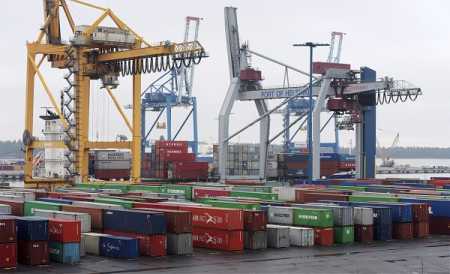Thu, 22 Dec, 2016 08:34:34 PM Unemployment rate to fall slowly FTimes Report, Dec 22
Structural problems in the labour market threaten to curb the level of growth towards the end of the forecast period, said a press release of the ministry on Thursdasy.
The GDP growth, however, has been spurred by the positive trend in the early months of the year and has been reliant on domestic demand.
In 2017 and 2018, the growth in country’s GDP will slow to around one per cent, which is close to the long-term growth potential. The GDP growth forecast for 2017 is 0.9 per cent, and for 2018 1.0 per cent.
Growth will slow in 2017 because the rise in domestic demand will ease up and export growth will again be muted. The export outlook is nevertheless significantly better than in recent years.
The Competitiveness Pact will improve price competitiveness measured in terms of unit labour costs, which will facilitate export growth. However, there will be a delay before the Pact’s positive effects on economic performance become evident. The Competitiveness Pact will, in addition, weaken both private and public consumption in 2017.
The global economic outlook has become more subdued, and there will not be a strong demand for Finnish exports.
Growth in many of the emerging economies has slowed significantly. In the industrial countries, recovery is still modest because investment levels are low, earnings are rising slowly and, as a consequence, consumer demand is weak.
Private consumption will grow at a slower rate as there will be only a moderate rise in the earnings level and inflation will gather pace. The trend in private consumption may prove to be more favourable than predicted if household indebtedness continues to grow at the rate seen in recent years.
There are negative risks associated with private consumption that may materialise if the employment trend is weaker than anticipated. The effects on consumption would be evident through income formation and consumer expectations, which could add to consumer caution and lead to a higher savings rate.
The unemployment rate has already declined to 8.6 per cent and the level of employment is rising, notably in construction.
Employment will continue to improve, but the unemployment rate will fall only slowly. A more rapid improvement in employment is prevented by structural problems: unemployed job seekers may not have the occupational skills needed for the job vacancies offered, or the jobs may be available in other locations than those in which unemployed job seekers reside.
The recovery in the Finnish economy has bolstered general government finances in 2016. However, sluggish economic growth in the coming years will not be sufficient to correct the imbalance between revenue and expenditure, which means that public finances will remain significantly in deficit.
The adjustment measures under the Government Programme will strengthen general government finances during the forecast period. However, the growth in age-related expenditure will continue to be rapid, hampering efforts to achieve a balance in public finances. The next few years will see a further increase in the general government debt-to-GDP ratio.
More News
|
|
Finland Times
| Monday, 17 November, 2025 |


